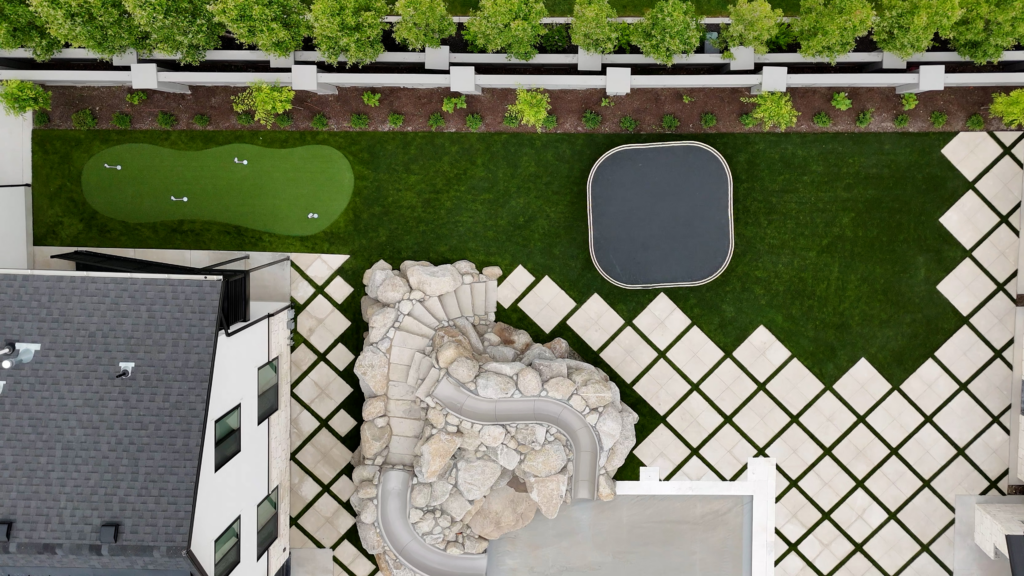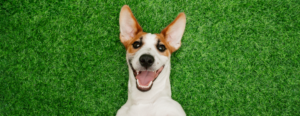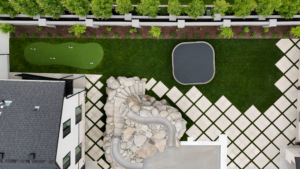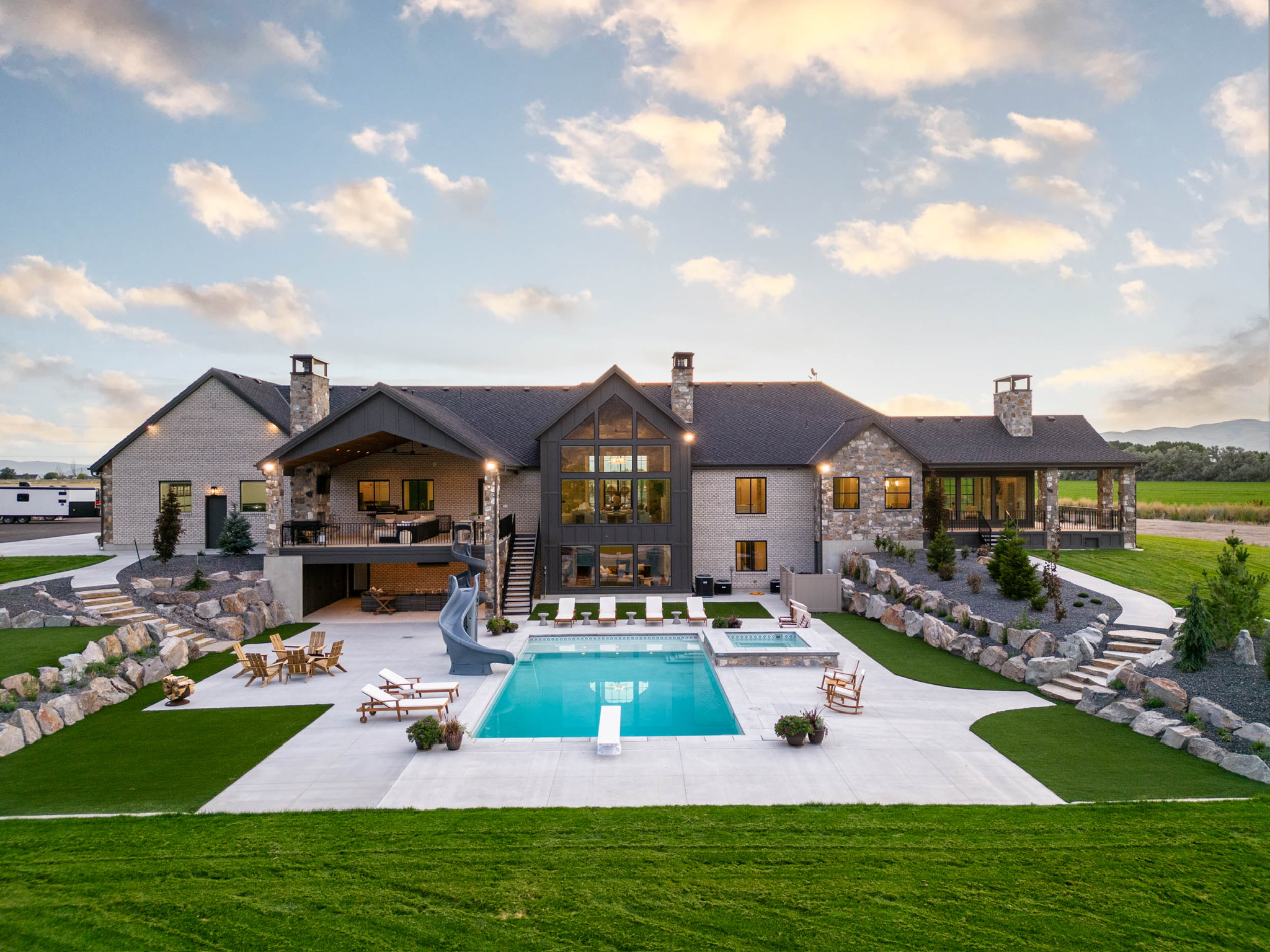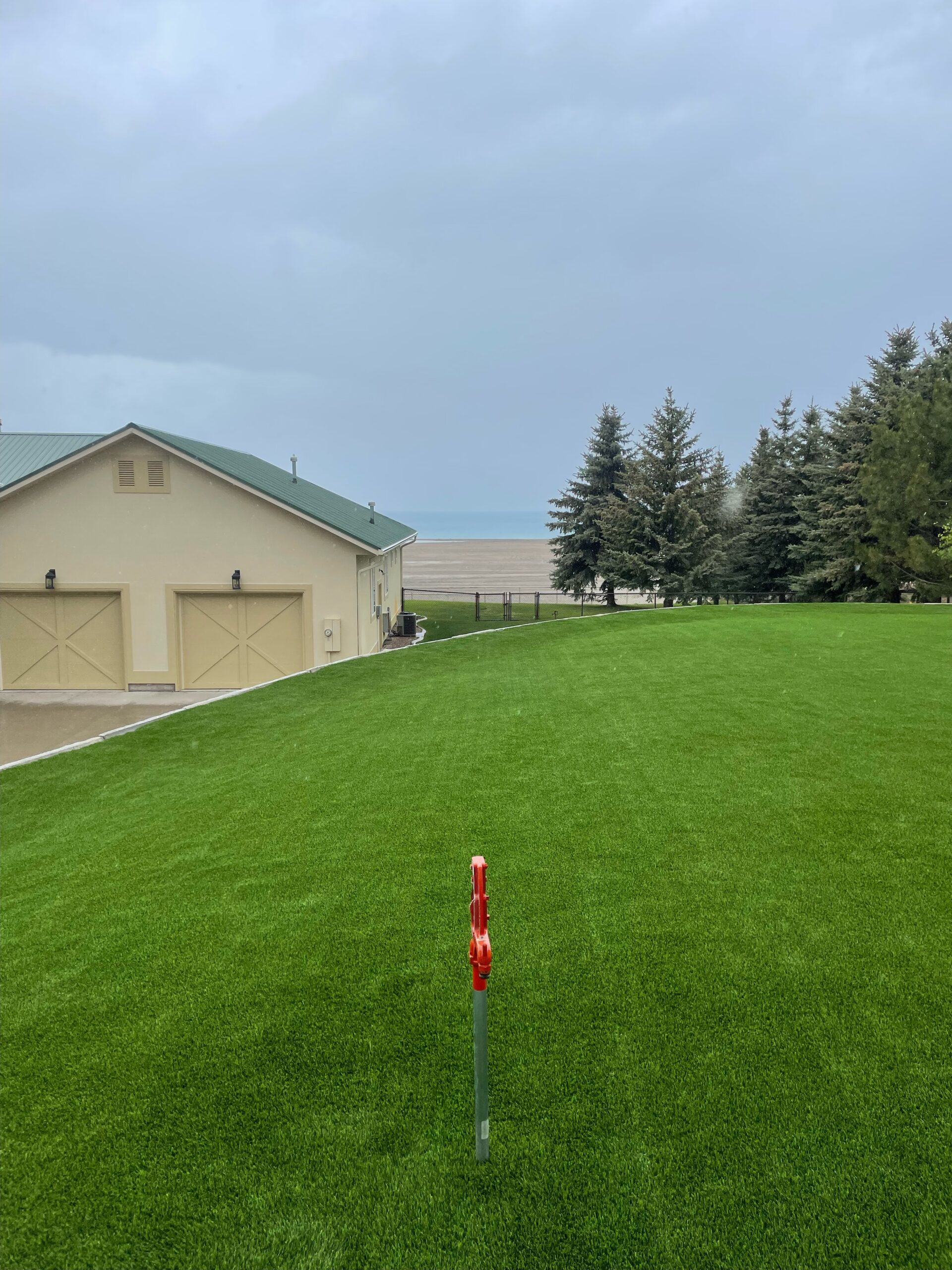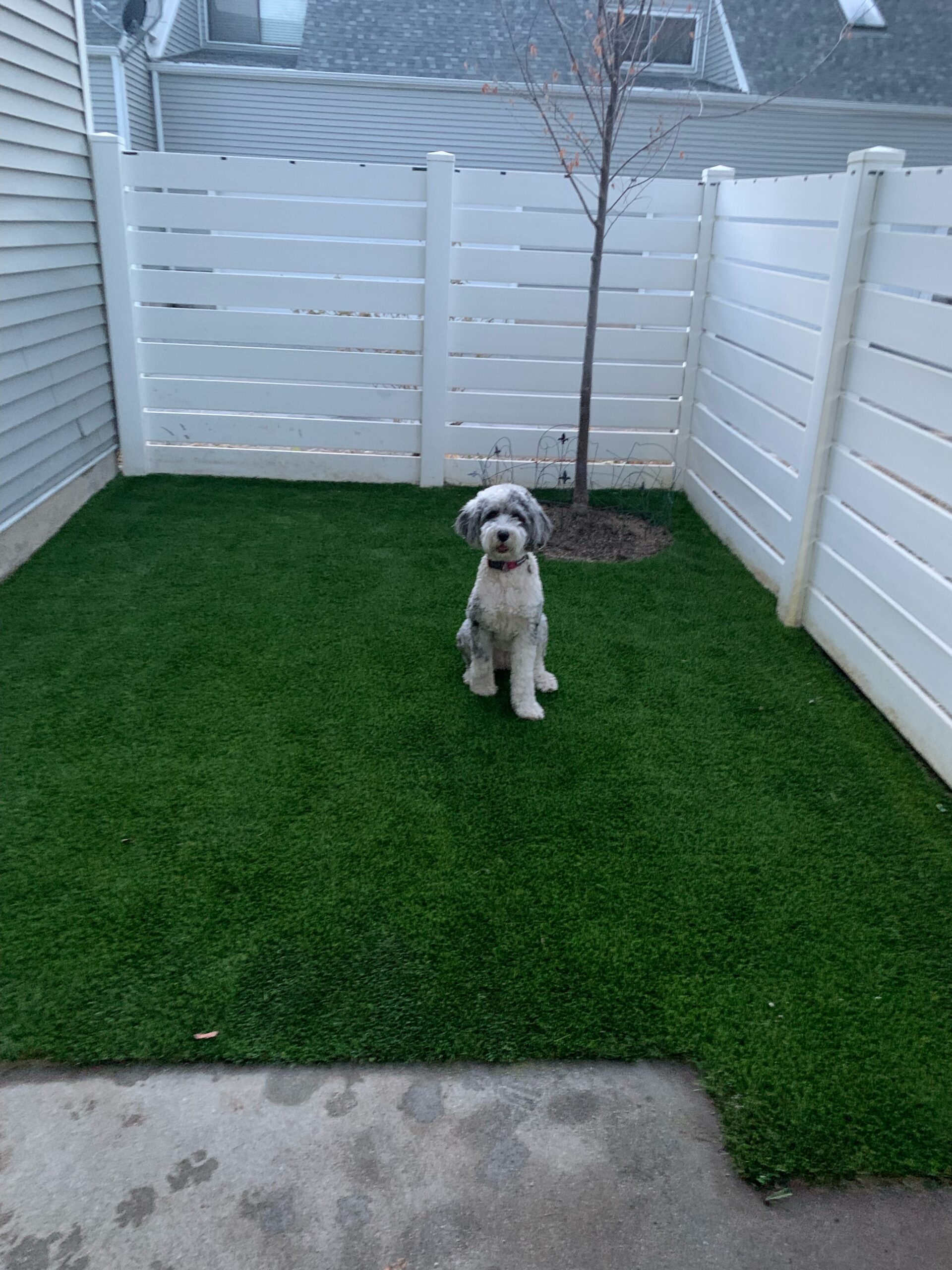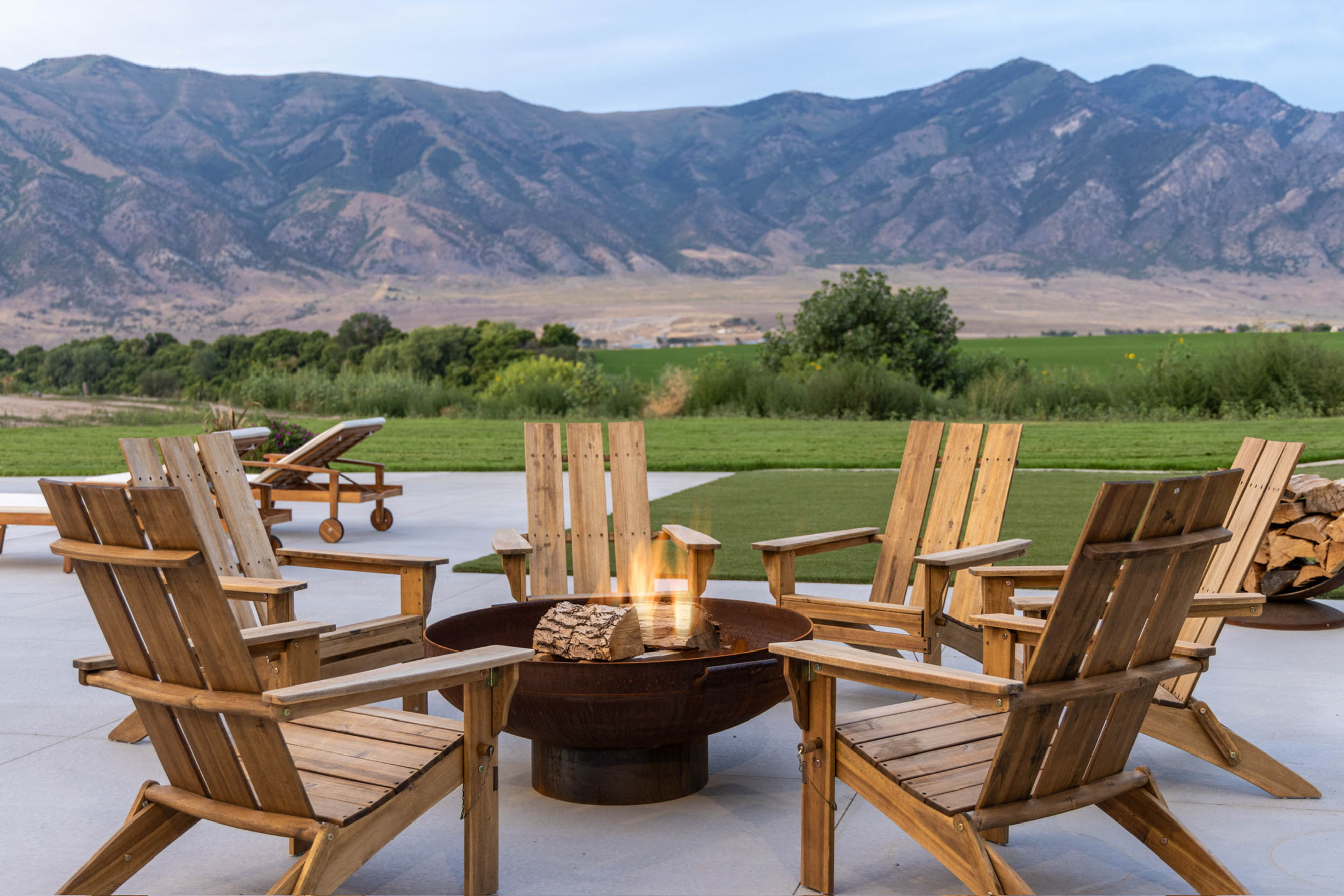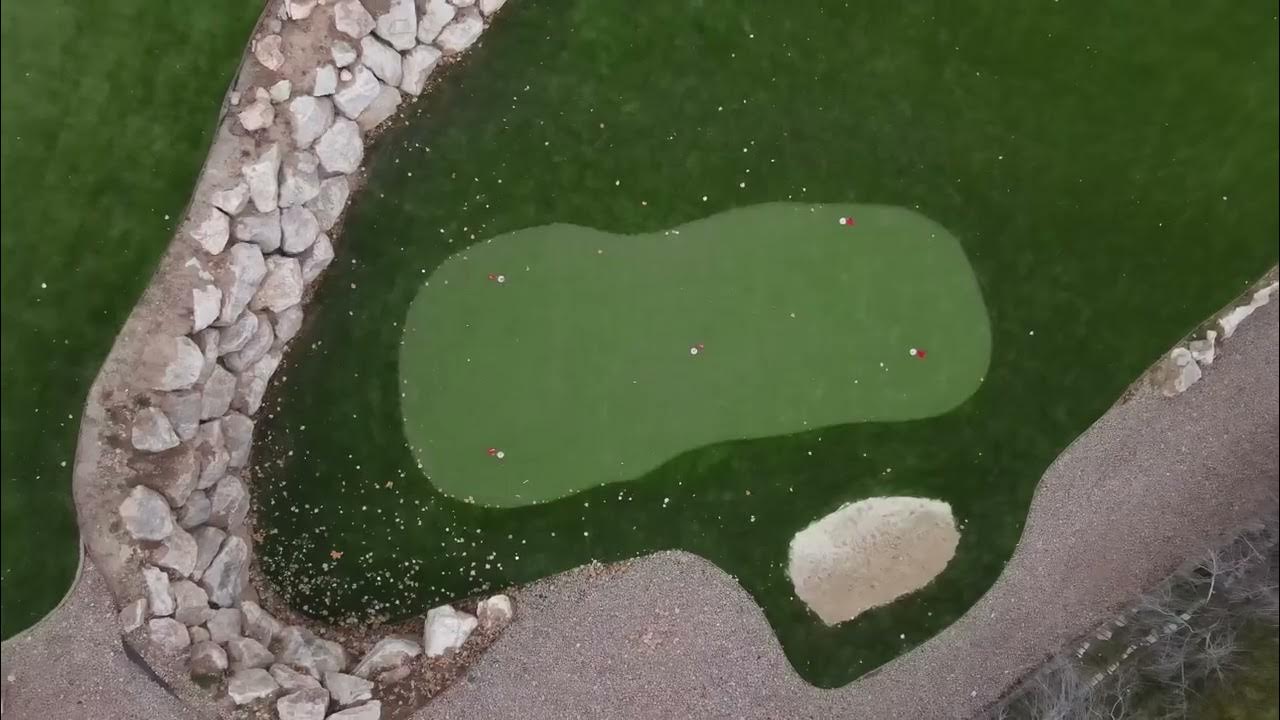Incorporating artificial turf around pavers or paving stones is an excellent way to enhance the aesthetic appeal and functionality of your outdoor spaces. Whether it’s a patio, pathway, or backyard, integrating pavers with artificial turf not only adds a touch of elegance but also reduces maintenance efforts. In this guide, we’ll walk you through the step-by-step process of installing artificial turf around large pavers, ensuring you achieve a professional-looking finish.
Why Choose Artificial Turf with Pavers?
-
- Low Maintenance: Unlike natural grass, artificial turf does not require watering, mowing, or fertilizing, making it a cost-effective solution.
-
- Aesthetic Appeal: Pavers with grass in between designs create visually appealing patterns that enhance the overall look of your outdoor areas.
-
- Durability: Artificial turf withstands heavy foot traffic and harsh weather conditions, ensuring it stays green and lush year-round.
-
- Eco-Friendly: Reduces water usage and eliminates the need for chemical treatments.
Which Kind of Turf Should I Use With Pavers?
Choosing the best kind of turf to use with pavers depends on a few factors such as the intended use, aesthetics, and durability. Here’s a breakdown of the types of artificial turf that work well with pavers:
-
- Polyethylene Turf: This type of turf is known for its softness and natural appearance, making it ideal for areas with pavers that are intended for leisure activities like lounging or children’s play areas. Polyethylene fibers are durable, non-abrasive, and maintain a lifelike color and texture.
-
- Nylon Turf: If your paver area will receive high foot traffic, nylon turf is an excellent option due to its resilience and ability to withstand wear. It’s the strongest type of artificial grass available, making it suitable for areas around patios and pathways where durability is key.
-
- Polypropylene Turf: This is a cost-effective option that works well in low-traffic areas. It’s less durable than polyethylene or nylon but is suitable for decorative spaces between pavers where the turf is not the primary walking surface.
Considerations for Pavers:
-
- Drainage: Ensure the turf you select has good drainage capabilities to avoid water pooling around the pavers. Most high-quality artificial turfs are designed with backing materials that promote efficient drainage.
-
- Pile Height: Choose a shorter pile height for areas with furniture or frequent foot traffic to prevent matting and maintain an even surface level with the pavers.
-
- Color and Texture: Select a turf that complements the color and texture of your pavers for a cohesive look. Elite Turf Supply offers a range of colors and textures, allowing you to closely match or contrast with your paving stones.
In addition to the type of turf, proper installation is crucial. Make sure the edges of the turf fit snugly against the pavers without overlapping or creating gaps, which could lead to uneven wear and an unattractive finish.
Ultimately, the best turf for your pavers will depend on your specific needs and aesthetic preferences and the kind of conditions/use the area will be subject to. Our warehouse is stocked with a huge variety of turfs and all the supplies you need. We’re also staffed with experts who can help you choose the best turf for your project needs.
Turf & Materials Needed:
-
- Artificial turf from Elite Turf Supply
-
- Pavers or paving stones
-
- Landscape fabric
-
- Base material (crushed rock or sand)
-
- Edging material
-
- Turf adhesive or nails from Elite Turf Supply
-
- Utility knife
-
- Tape measure
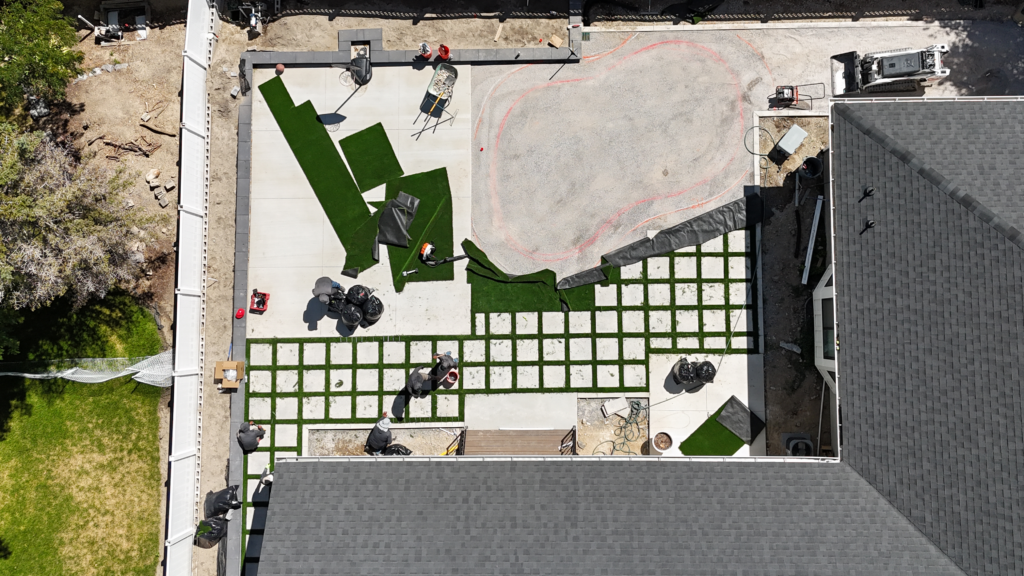
Step-by-Step Turf/Paver Installation Guide:
Preparation of the Area:
- Clear the installation area of any debris and weeds.
- Ensure the ground is level. If not, level it by adding or removing soil.
Laying the Base:
- Install a layer of landscape fabric to prevent weed growth.
- Add a 2 to 3-inch layer of crushed rock or sand and compact it to create a stable base.
Setting the Pavers:
- Place the pavers according to your desired pattern, leaving enough space for the turf strips (about 2-4 inches).
- Use edging around the pavers to keep them in place and to define the area where the turf will be laid.
Installing the Artificial Turf:
- Measure and cut the artificial turf to fit around the pavers (making a paper cut-out as a template can be useful).
- Secure the turf using turf nails, ensuring it fits snugly against the pavers without any overlaps.
Finishing Touches:
- Brush the turf to fluff up the fibers.
- If necessary, add infill to help the turf stand up and enhance its natural look.
FAQs
Does patio artificial grass between pavers look good?
Yes! Patios with artificial grass and pavers give a lush appearance with the benefit of stepping stones of pavers for tables and chairs.
Can I install artificial turf around curved pavers?
Yes, artificial turf is flexible and can be cut to fit any shape, making it ideal for curved paver designs.
How long will my artificial turf last?
With proper care, artificial turf can last up to 15-20 years, making it a durable option for any outdoor space.
Are pavers okay to use in the backyard?
Backyard artificial grass and pavers are a delight and stay that way year-round with almost no maintenance and zero water!
Need More Help With Your Paver/Turf Project?
Installing artificial turf around pavers is a straightforward process that can dramatically improve the appearance and usability of your outdoor areas. By choosing high-quality materials from Elite Turf Supply and following these detailed instructions, you can enjoy a beautiful and low-maintenance landscape that lasts for years.

